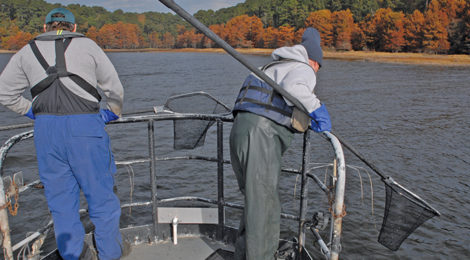
Bass That Go “Beep”
TPWD tracking studies to monitor movements of fish at Toledo Bend, Fork
Story and Photography by Matt Williams
Bass anglers are sometimes quick to assume the worst when the fishing quality wanes on their favorite lake. It’s can be particularly frustrating when the lull drags on for months.
Anglers at Toledo Bend and Lake Fork have been grumbling about a downward slide in the bass fishing on those two impounds for quite a while. They haven’t been shy about pitching questions to Texas Parks and Wildlife Department fisheries scientists, either.
Are the fish sick? Did they die? Did they swim to the opposite end of the lake? Have they grown wise to artificial baits, learned to skirt the tick of electronic transducers or the whine of outboards? Or have they simply developed a case of long-term lockjaw?
Last fall, TPWD’s inland fisheries division launched intensive research studies meant to address angler concerns and learn more about seasonal movements of bass on these two East Texas impoundments.
Both reservoirs have rich histories with bass anglers, but neither has been living up to their reputation in recent times. Interestingly, current electrofishing survey data shows the powerhouse fisheries are in good shape.
Headed up by veteran TPWD inland fisheries biologist Todd Driscoll, the Toledo Bend study is built around about 50 “tournament grade” bass, most ranging from 14 inches to around six pounds.
Fisheries biologist Jake Norman is overseeing the Fork research. That study includes 30 bass divided in two size classes —12-16 inches and 16-20 inches. The bass are implanted with battery-operated transmitters. Scientists are relying on radio telemetry gear to monitor movements of the fish and document how they react and where they position under varied conditions during changing seasons.








